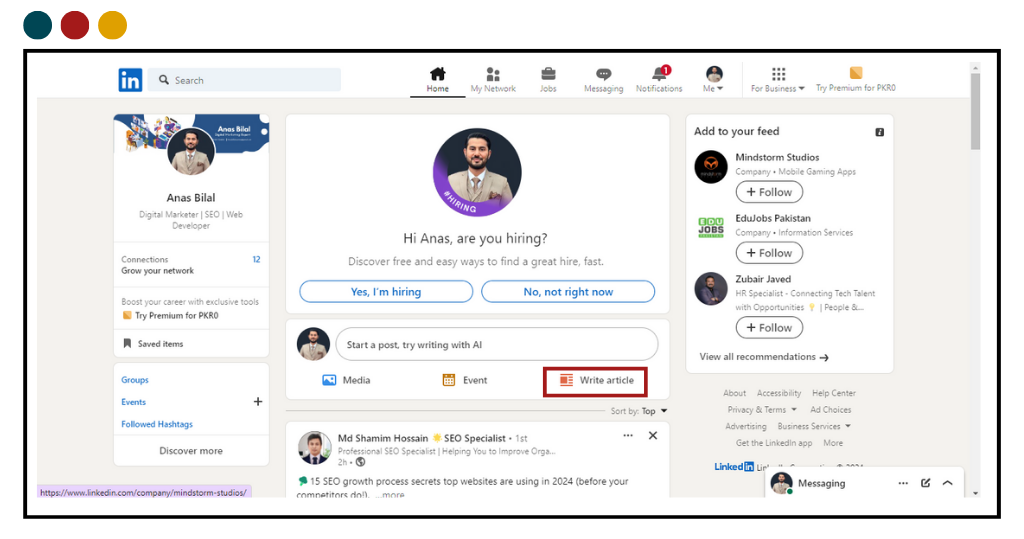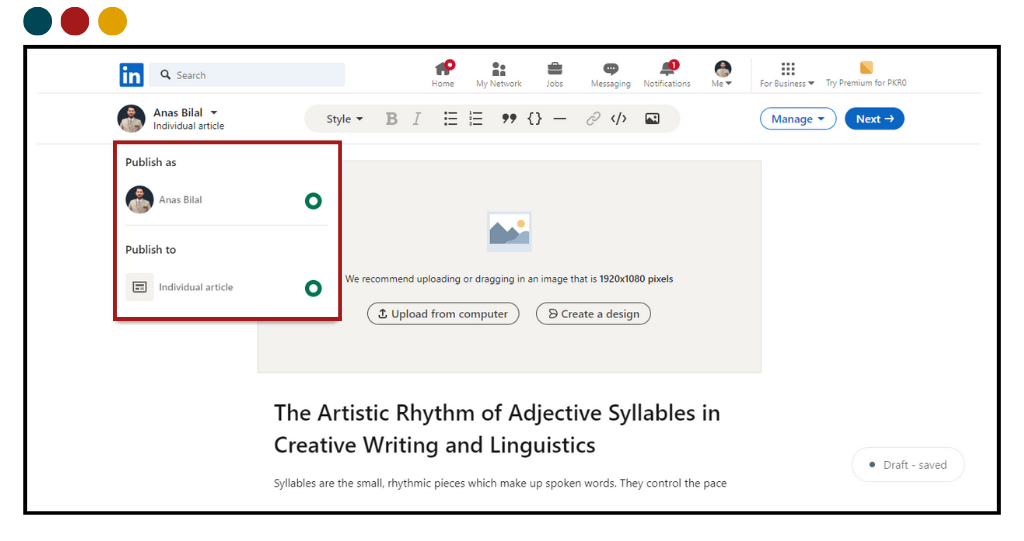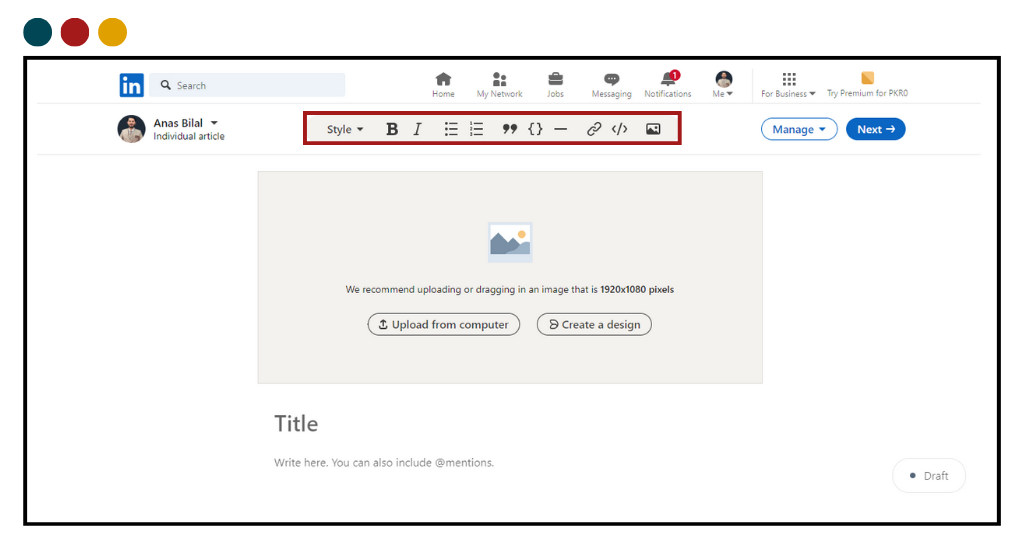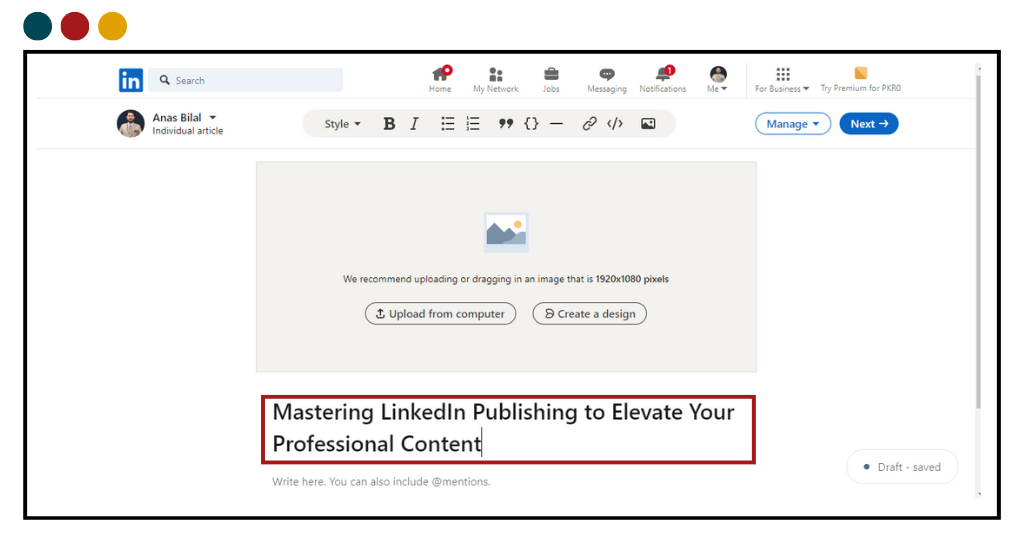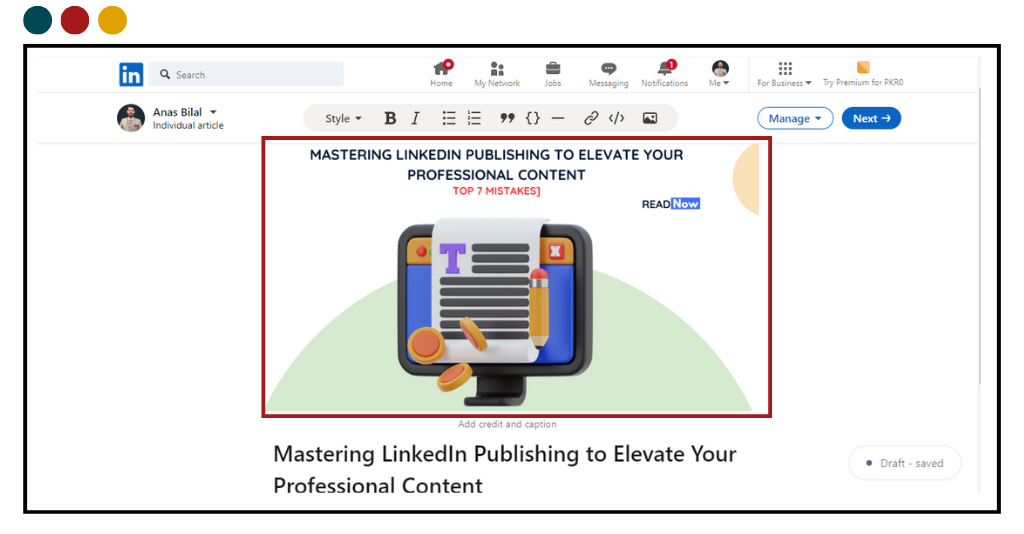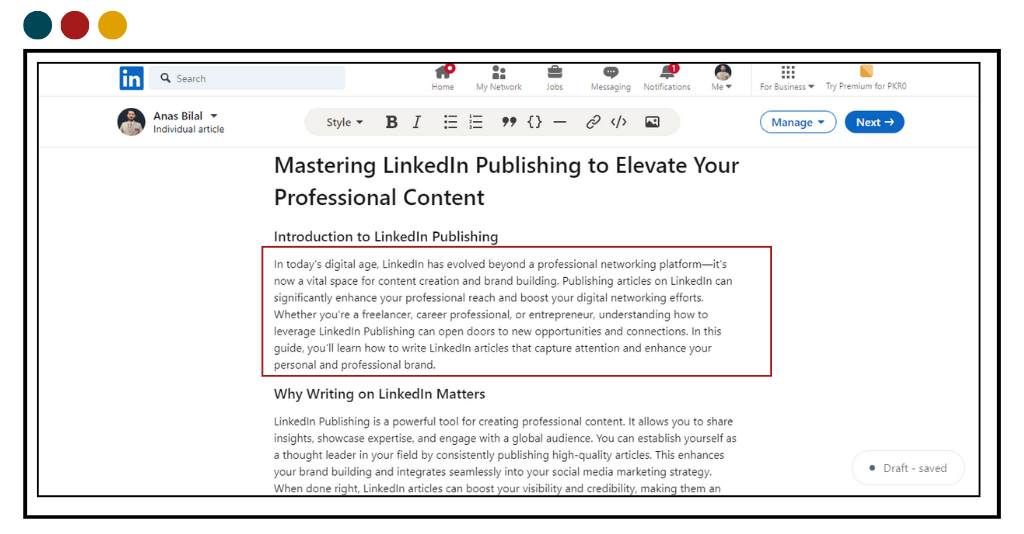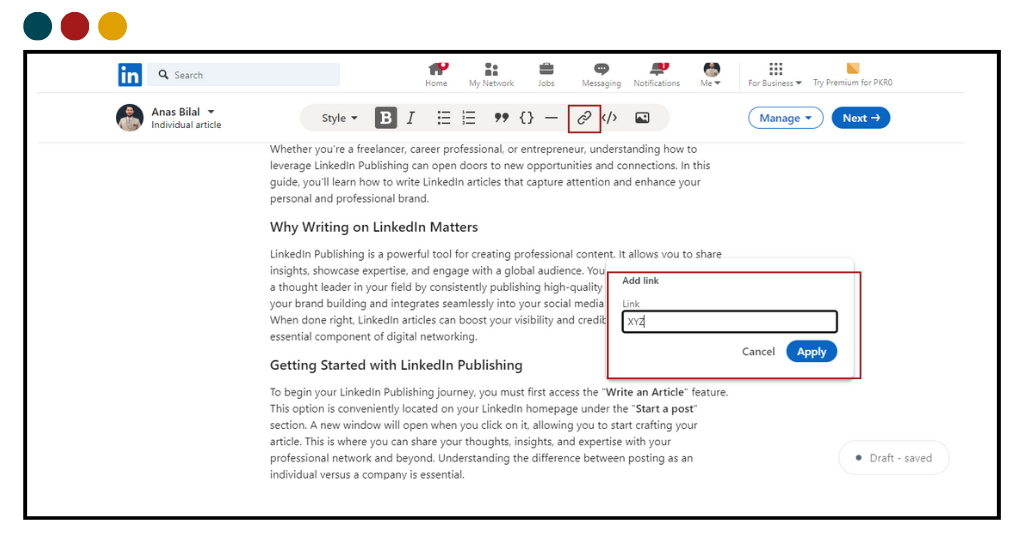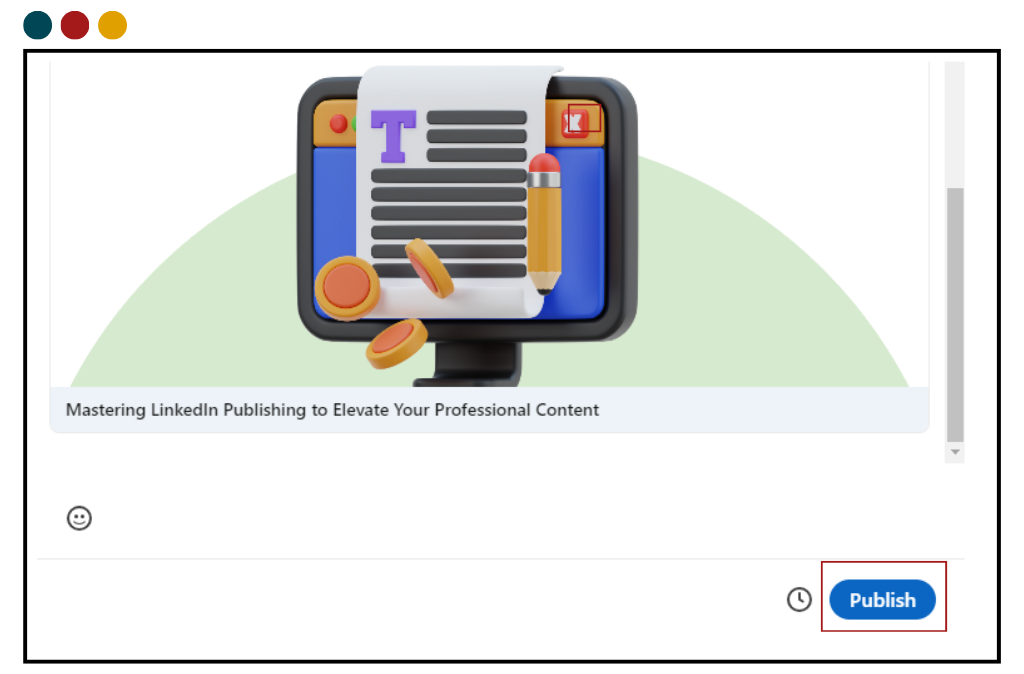![How to Write Article on LinkedIn [With Top 7 Mistakes]](https://kountif.com/wp-content/uploads/2024/08/how-to-write-article-on-linkedin-1.png)
Introduction to LinkedIn Publishing
In today’s digital age, LinkedIn has evolved beyond a professional networking platform—it’s now a vital space for content creation and brand building. Publishing articles on LinkedIn can significantly enhance your professional reach and boost your digital networking efforts. Whether you’re a freelancer, career professional, or entrepreneur, understanding how to leverage LinkedIn Publishing can open doors to new opportunities and connections. In this guide, you’ll learn how to write article on LinkedIn that capture attention and enhance your personal and professional brand.
Table of Contents
ToggleWhy Writing on LinkedIn Matters
LinkedIn Publishing is a powerful tool for creating professional content. It allows you to share insights, showcase expertise, and engage with a global audience. You can establish yourself as a thought leader in your field by consistently publishing high-quality articles. This enhances your brand building and integrates seamlessly into your social media marketing strategy. When done right, LinkedIn articles can boost your visibility and credibility, making them an essential component of digital networking.
Getting Started with LinkedIn Publishing
To begin your LinkedIn Publishing journey, you must first access the “Write an Article” feature. This option is conveniently located on your LinkedIn homepage under the “Start a post” section. A new window will open when you click on it, allowing you to start crafting your article. This is where you can share your thoughts, insights, and expertise with your professional network and beyond. Understanding the difference between posting as an individual versus a company is essential.
Individual posts often highlight personal experiences, lessons learned, and unique perspectives, which can create a strong connection with your audience. In contrast, company posts tend to focus on broader industry trends, corporate achievements, and organizational values. Each approach has unique impacts on social media marketing, so take time to consider which aligns best with your content strategy and overall goals for engagement and visibility.
Choosing the Right Authoring Method
Deciding whether to publish as an individual or on behalf of a company is a crucial step that can significantly influence your reach and resonance. When you publish as an individual, you can add a personal touch to your content, which can resonate deeply with your network. This authenticity can foster trust and engagement, ultimately aiding in personal brand building and positioning you as a thought leader within your field.
On the other hand, posting as a company can effectively reinforce brand values and engage a broader audience within the professional content sphere. Company posts are often more structured and can highlight teamwork, company culture, or insights from multiple organizational voices. To make an informed decision, weigh the pros and cons of each option based on your specific objectives. If your primary goal is to enhance personal visibility and establish yourself as an expert in your domain, focus on crafting compelling individual posts. Conversely, company posts may be the more suitable route for those looking to strengthen corporate identity and showcase your company’s expertise. Remember, both methods can coexist and complement your overall content strategy.
Mastering the LinkedIn Publishing Interface
Once you’ve chosen your preferred authoring method, it’s essential to familiarize yourself with LinkedIn’s robust content creation tools. The platform boasts a user-friendly interface that caters to novice and experienced writers, offering various formatting options designed to enhance readability and increase article visibility. To make your content more engaging, utilize headings, bullet points, and bold text to break up your writing into easily digestible sections.
This improves the overall reading experience for your audience and supports SEO optimization by making your content more structured and accessible to search engines. Clarity and engagement are crucial to producing professional content; a well-structured article can significantly enhance your credibility and influence within your network.
Crafting a Headline that Captures Attention
Your article’s headline serves as your first impression, so it’s crucial to make it count. A robust and engaging headline is essential for drawing readers in and significantly improving content engagement. To optimize your headline for SEO, incorporate relevant keywords naturally, such as “LinkedIn Publishing,” “Professional Content,” or even industry-specific terms that resonate with your target audience.
A compelling headline can substantially boost article visibility and extend your professional reach across the platform. Think of it as the hook that grabs attention and encourages clicks, setting the tone for the valuable insights and information that will follow in your article. A well-crafted headline can make a lasting impact, enticing readers to dive deeper into your content and share it with their networks, amplifying your voice and expertise in your field.
Selecting and Optimizing a Cover Image
A well-chosen cover image can enhance your article’s visual appeal and contribute to brand-building efforts. When selecting an image, it’s crucial to ensure it resonates deeply with the content and effectively aligns with your professional identity and the message you want to convey. Take the time to explore various royalty-free image sources, such as Unsplash, Pexels, or Pixabay, to find visuals that not only complement your message but also evoke the right emotions in your audience.
Once you have chosen the perfect image, optimize it for LinkedIn’s publishing platform by ensuring it is of high resolution and adheres to the correct dimensions specified by the platform. A striking cover image, combined with a compelling and relevant headline, can make your article stand out in a crowded feed, capturing the attention of potential readers and encouraging them to click and engage with your content.
Writing Content that Engages and Converts
When writing your LinkedIn article, it’s essential to focus on structuring your content to maintain reader interest from start to finish. This involves thoughtfully integrating storytelling elements and actionable insights while maintaining a professional tone. Aligning your writing with social media marketing principles will help you create a more engaging narrative. Each paragraph should flow logically into the next, guiding readers effortlessly through your ideas and keeping them engaged.
Additionally, encourage interaction by posing thought-provoking questions or inviting comments at the end of your article. This fosters a sense of community and encourages dialogue with your audience. The ultimate goal is to create content that informs and converts readers into followers or collaborators, thus extending your digital networking reach and enhancing your professional relationships on the platform. By focusing on engagement and conversion, you can maximize the impact of your articles and build a loyal audience over time.
Enhancing Your Article with Multimedia
Incorporating multimedia elements such as images, videos, infographics, or slideshows can significantly enrich your content and enhance the overall reader experience. Visuals provide context, break up text-heavy sections, and create a more dynamic reading environment, making your article more engaging and informative. When integrating multimedia, it’s essential to use technical tips to ensure that all media aligns seamlessly within the article’s flow, avoiding distractions that could detract from your main message.
For instance, embedding relevant videos can offer deeper insights, serve as tutorials, or illustrate complex concepts, thereby enhancing the overall impact of your content. This multimedia approach can elevate your professional articles, making them more dynamic and appealing to a broader audience. Moreover, well-placed images can evoke emotions and help readers connect more personally with the material, leading to a more memorable reading experience.
Leveraging Links and Snippets for Added Value
Incorporating external links within your article can provide readers with additional resources and greatly enhance your content strategy. Links to reputable sources, academic papers, or related content add depth and authority to your work and encourage readers to explore further, enriching their understanding of the topic. Additionally, snippets—concise, highlighted pieces of information—can drive engagement by offering easy-to-digest insights within your article. For example, presenting key statistics or quotes in a visually distinct format makes them stand out and allows readers to grasp essential points quickly. These elements improve the overall value of your content and support SEO optimization by signalling to search engines that your article is well-researched and authoritative. By strategically placing links and snippets, you can guide readers through your content, fostering a sense of exploration and encouraging them to share your insights with others.
Publishing and Promoting Your LinkedIn Article
Before hitting the publish button, it’s crucial to ensure your article is polished and fully ready for its intended audience. This involves a thorough review process that includes checking for SEO optimization to enhance visibility, correcting grammar mistakes, and assessing overall readability to ensure that your points are communicated clearly. Consider using tools to analyze keyword usage and readability scores.
Once your article is live, promoting it to maximize its reach and engagement is essential. Begin by sharing it within your LinkedIn network; this is your primary audience, and your colleagues will likely be interested in your insights. Don’t stop there—extend your promotion to other social media platforms, such as Twitter, Facebook, and Instagram, to tap into different audiences who might benefit from your content.
To further amplify its impact, encourage colleagues and peers to engage with your article by leaving comments, sharing their thoughts, or reposting it on their profiles. This interaction enhances visibility and fosters a sense of community, making your professional network more vibrant and interconnected. By taking these steps, you can significantly extend the reach of your article and solidify your presence as a thought leader in your field.
7 Unique Tips for writing an impactful LinkedIn Article
Know Your Audience
Tailor your content to your LinkedIn network’s interests, needs, and challenges. Understanding who your audience is allows you to create content that resonates deeply with them, ensuring it captures their attention and provides genuine value to their professional lives. Take the time to research your audience demographics and preferences by analyzing their profiles, engagement patterns, and the types of content they share. This insight will provide a solid foundation for crafting relevant and impactful posts.
Leverage Personal Experience
Share personal anecdotes or detailed case studies to add a layer of authenticity to your writing. Real-life stories have a unique ability to draw readers in, making the information you present more compelling. Demonstrating real-world applications of your insights makes your content more relatable and engaging, allowing readers to connect with your experiences personally. This connection can foster trust and encourage your audience to see you as a credible source of information and inspiration.
Use Data and Statistics
Incorporate relevant data and statistics to support your points and enhance your credibility. By providing concrete numbers and facts, you create a more persuasive narrative that reinforces your arguments. Furthermore, using data helps showcase your expertise and the thorough research behind your claims, making your insights more authoritative. Consider using graphs or infographics to present this data visually, as visuals can often convey complex information more effectively and keep readers engaged.
Maintain a Professional Tone
Ensure your writing style reflects professionalism and aligns with LinkedIn’s business-oriented environment. A polished tone demonstrates your commitment to quality and helps establish trust with your audience. Choose your words carefully, avoiding overly casual language while still maintaining a conversational approach. This balance will reinforce your position as a knowledgeable professional in your field, making your audience more likely to respect and value your insights.
Engage with Readers
Pose thought-provoking questions or invite readers to share their opinions to encourage interaction and foster a sense of community. Engaging with your audience boosts your content’s visibility and helps build meaningful connections with others in your industry. Responding to comments and feedback demonstrates that you value your audience’s input, creating a dialogue that can lead to further engagement and forming professional relationships.
Optimize for SEO
Strategically include relevant keywords throughout your article to improve its searchability on LinkedIn and external search engines. Conduct keyword research to identify terms your target audience is searching for and incorporate them naturally into your content. By optimizing your content for SEO, you increase the likelihood of reaching a wider audience, making it easier for others to find and benefit from your insights. This approach enhances your visibility on LinkedIn and can drive traffic from outside sources, expanding your reach and influence.
Proofread Thoroughly
Review your article meticulously for grammatical errors, typos, and clarity to ensure a polished and professional presentation. A well-edited piece reflects your attention to detail and enhances your credibility, making readers more likely to trust and share your content. Consider reading your article aloud or using editing tools to catch mistakes you might overlook. Additionally, having a colleague review your work can provide fresh perspectives and help you identify areas for improvement before hitting that publish button.
7 Mistakes to Avoid When Writing a LinkedIn Article
| Mistake | Description | Tips |
|---|---|---|
| Weak Headline | Failing to grab attention | Craft a compelling, keyword-rich headline |
| Poor Structure | Disorganized content flow | Use clear headings and subheadings |
| Overuse of Buzzwords | Using too much industry jargon | Simplify language for broader understanding |
| Ignoring SEO Best Practices | Missing opportunities for optimization | Incorporate relevant keywords naturally |
| Neglecting Visual Content | Relying solely on text | Enhance with images, videos, and infographics |
| Overlooking Engagement | Not encouraging reader interaction | Add calls to action and ask for comments |
| Failing to Proofread | Allowing errors to slip through | Thoroughly review and edit before publishing |
Conclusion
Mastering LinkedIn publishing is a powerful way to elevate your professional content and establish yourself as a thought leader. Following the tips outlined in this guide, you can create high-quality articles that capture attention, enhance your personal and professional brand, and drive engagement. Remember to know your audience, leverage personal experience, use data and statistics, maintain a professional tone, engage with readers, optimize for SEO, and proofread thoroughly. Doing so can unlock new opportunities and connections and take your professional brand to the next level.
FAQs
Why is LinkedIn publishing important for professionals?
LinkedIn publishing allows professionals to share insights, showcase expertise, and engage with a global audience, establishing themselves as thought leaders.
How can I make my LinkedIn article more engaging?
Use headings, bullet points, and bold text to break up your writing, and incorporate multimedia elements like images, videos, and infographics to make your content more dynamic and informative.
How can I optimize my LinkedIn article for SEO?
Use relevant keywords throughout your article, conduct keyword research to identify terms your target audience is searching for, and incorporate them naturally into your content to improve searchability.
Why is proofreading important for LinkedIn articles?
Proofreading ensures a polished and professional presentation, reflects your attention to detail, and enhances your credibility, making readers more likely to trust and share your content.

